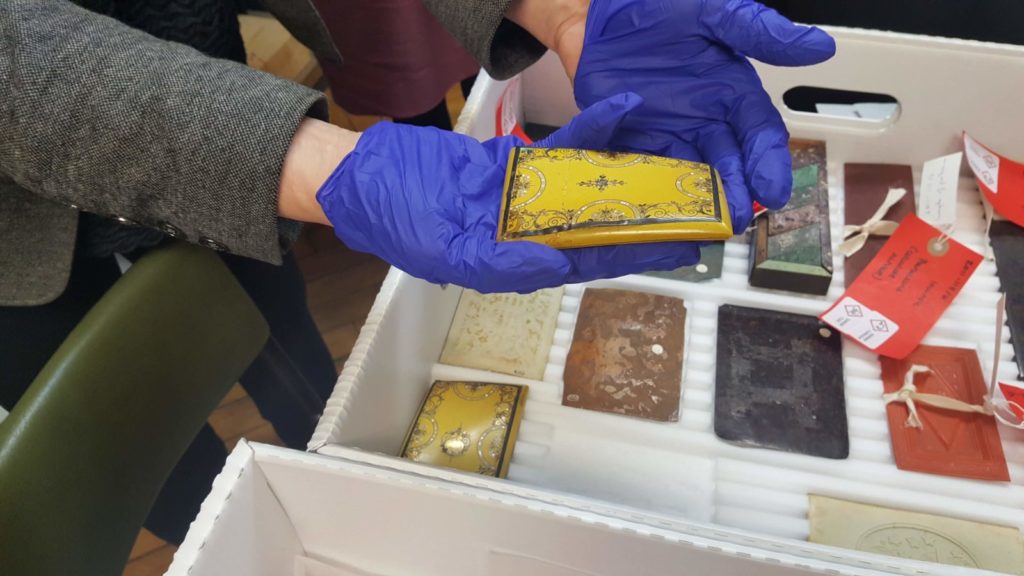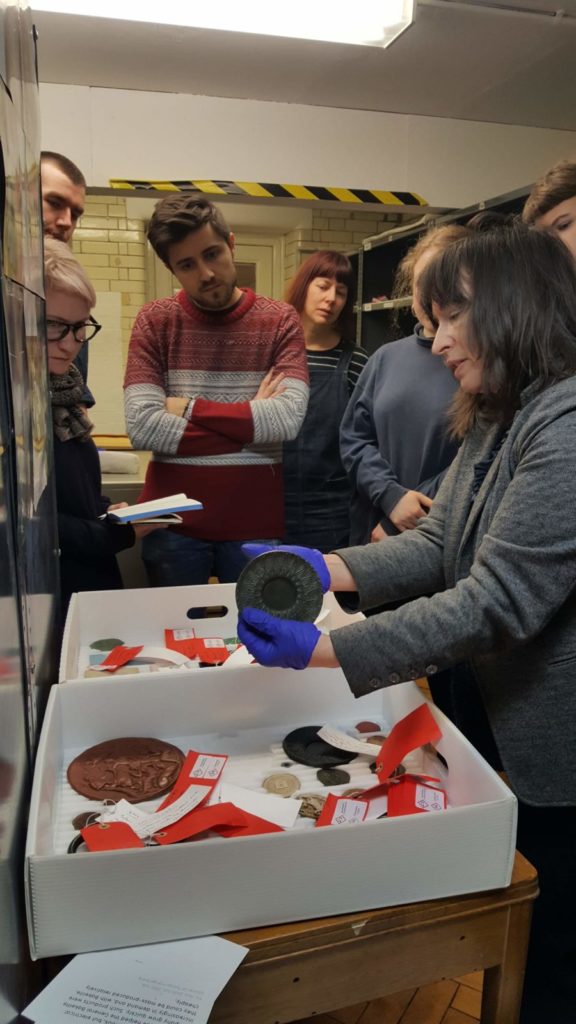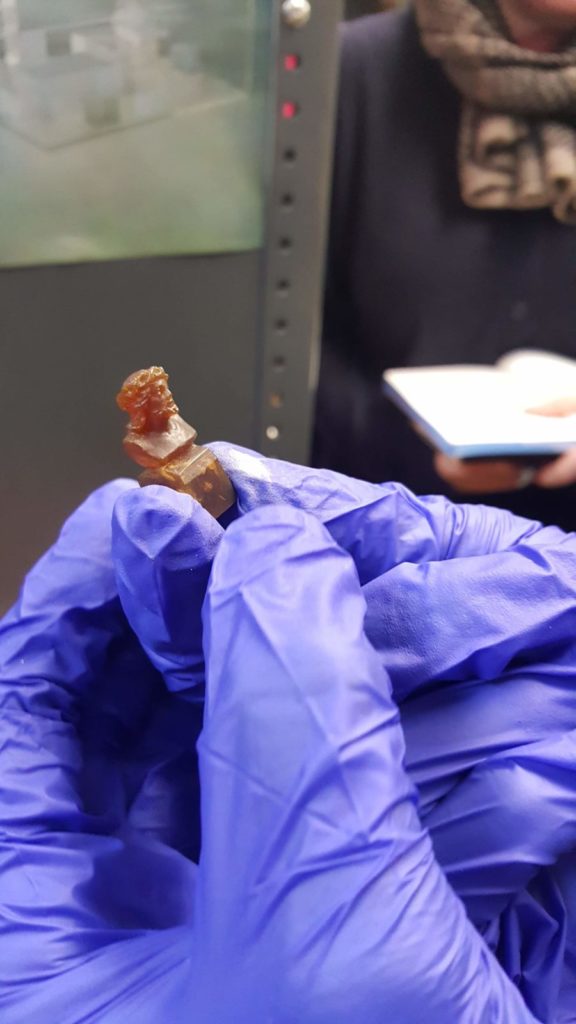We find out more about Alexander Parkes, the inventor of the first plastic, at the Science Museum's archives
Steering group member Frederick O’Brien gives a personal response to our visit to the Science Museum’s archives at Blythe House in London:
Gifts from History
Archives are strange, touching places: so many products of life boxed up and shelved, kept only out of some deep need to remember what has come before. We were lucky enough to see the earliest forms of plastic during a trip to Blythe House.
By the time you read this Blythe House will no longer exist as an archive. Its contents have been painstakingly sorted, labelled, and shipped to a new home in the country. We were the last group to visit before the move.
Hundreds of pieces of Parkesine (the semi-synthetic plastic invented by Alexander Parkes) lined the shelves ready to ship, each wrapped in brightly coloured bows like gifts. The room had a sweet, slightly sterile scent. Apparently each room in the archive has a smell matching its contents, be it brass or decaying leather. Our room was full of plastic.

Dr Susan Mossman showed us round. Her passion for Parkes’ work was endearing – and infectious. Handling the items with latex gloves, she showed us everything ‘from the mundane to the high Victoriana’.
The detail of the objects there was astonishing. Even the most mundane items were given exquisite care. Medallions and walking stick handles were carved as if they were made of marble or ivory.


It is disappointing how much better we treat a material when there isn’t much left of it. Plastic wasn’t a cheap, disposable material then and it isn’t now; all that seems to have changed is that now we treat it badly.
In the collection is a box of Alexander Parkes’ papers. Parkes is the founding father of plastic and his letters are preserved in glossy wallets. It seems right for Parkes’ memory to be preserved in plastic. It is an unconventional burial chamber, but quite appropriate.
